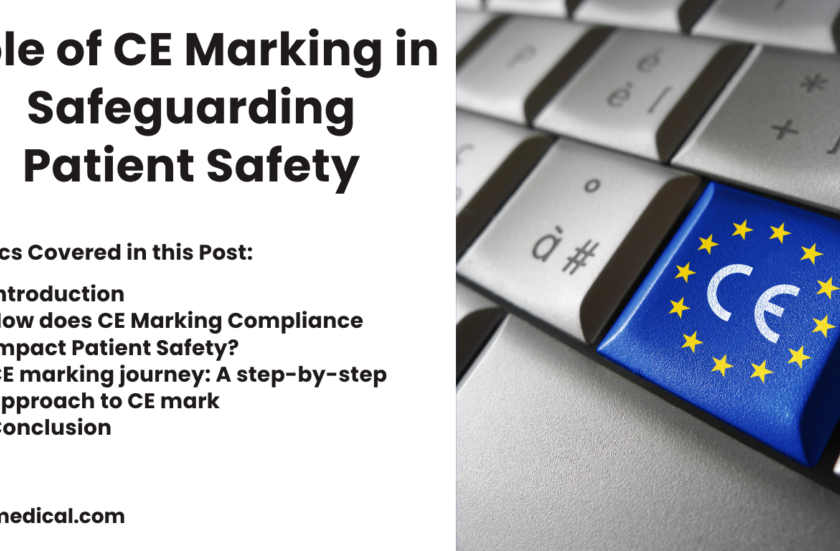The CE marking signifies a medical device’s adherence to stringent European Union (EU) safety regulations. This compliance process, known as CE marking compliance for patient safety, is critical in ensuring the quality and effectiveness of medical devices. By mandating rigorous assessments, it directly impacts patient safety.
Manufacturers must demonstrate their devices meet essential safety and performance requirements, minimizing risks associated with malfunction, biocompatibility issues, or inadequate design. Ultimately, CE marking is a vital assurance for patients and healthcare professionals, fostering trust in the medical devices used for diagnosis, treatment, and care.
This article discusses why CE marking of device devices is of paramount importance.
How does CE Marking Compliance Impact Patient Safety?
CE marking compliance for patient safety mandates a rigorous assessment process for medical devices. Manufacturers must demonstrate that their products meet essential safety and performance requirements.
This translates to real-world benefits for patients:
- Minimized Risk: CE marking compels manufacturers to identify and mitigate potential risks associated with their devices. This includes evaluating factors like malfunction, biocompatibility (compatibility with human tissue), and design flaws, addressing these concerns and thereby reducing the risk of adverse events for patients.
- Enhanced Performance: The CE marking process ensures that devices perform as intended. This translates to accurate diagnoses, effective treatment delivery, and improved patient outcomes. For example, a CE-marked thermometer can be trusted to provide precise temperature readings, which is crucial for proper diagnosis and treatment decisions.
- Transparency and Accountability: CE marking fosters transparency by holding manufacturers accountable for the safety and quality of their devices. Patients and healthcare professionals can be confident that CE-marked devices have undergone rigorous evaluation. The CE marking process also requires maintaining a technical file with detailed device information, allowing for traceability and facilitating potential post-market safety monitoring.
CE marking journey: A step-by-step approach to CE mark
The Conformité Européenne or CE mark means that the manufacturer takes responsibility for a product’s compliance with all applicable European health, safety, performance and environmental requirements. The road to CE marking compliance for patient safety is a multi-step process.
Here’s a breakdown of the critical stages:
- Classification: Manufacturers first classify their device based on its intended use and potential risks. This determines the level of scrutiny required during the assessment process.
- Technical Documentation: A comprehensive technical file is compiled detailing the device’s design, manufacturing processes, risk assessments, and performance testing data. This file is a vital record for regulators and facilitates future vigilance activities.
- Conformity Assessment: Depending on the classification, the manufacturer may need to undergo an independent assessment by a notified body – an organization recognized by the EU to evaluate medical devices. This assessment verifies the technical documentation and may involve inspections of manufacturing facilities and testing the device itself.
- Declaration of Conformity: Once satisfied with the device’s safety and performance, the manufacturer formally declares that the device meets all relevant CE marking compliance requirements.
- Device Marketing and Post-Market Surveillance: Following CE marking, the device can be placed on the market. However, the manufacturer’s responsibility continues. Post-market surveillance ensures the device’s continued safety and effectiveness in real-world use. This involves collecting and analysing feedback from healthcare professionals and patients, monitoring for adverse events, and implementing corrective actions.

Figure: Steps involved in CE marking of a medical device
Conclusion
The CE marking signifies more than just regulatory compliance within the European Union (EU); it is a cornerstone of patient safety for medical devices. The stringent procedures mandate a rigorous assessment and adherence to well-defined safety principles.
CE marking fosters trust in the medical device market, empowering patients to receive high-quality healthcare with minimized risks.
Ultimately, it serves as a robust system that safeguards patient well-being while promoting innovation in developing safe and effective medical technologies.







